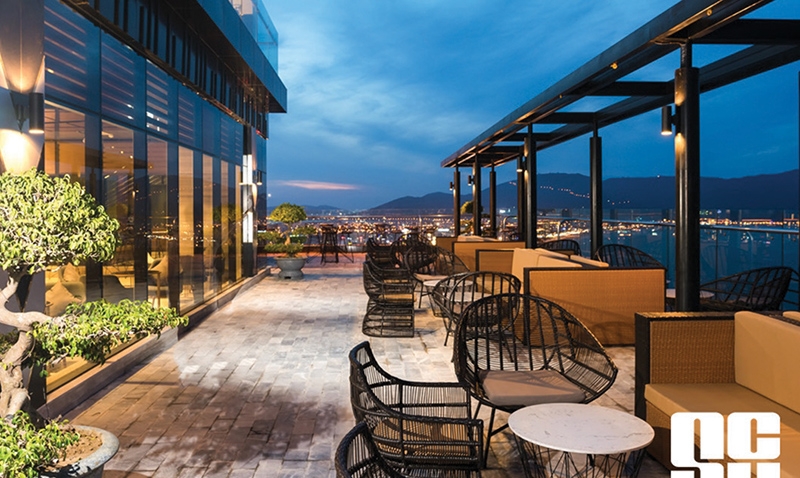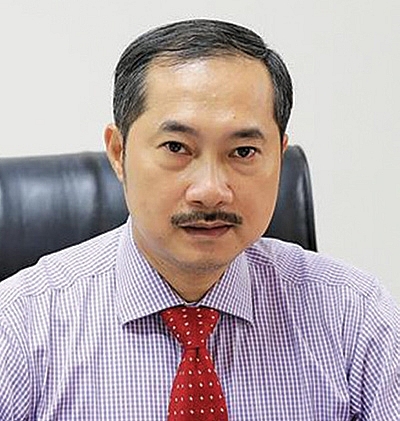Central coast tourism businesses required to tighten their belts
 |
| Central coast tourism businesses required to tighten their belts |
All four localities jointly hosted a special campaign under the theme Central Region – Magical Heritage Region and cooperated with Hanoi and Ho Chi Minh City to organise stimulus programmes. During the national holidays between April 30 and May 1, tens of thousands of tourists booked tours to the central provinces while luxury hotels and resorts received a huge number of bookings, raising their occupancy rates to up to 90 per cent. After the gloomy 2020, it finally seemed like the green light for tourism was turned on for the summer season.
However, when the domestic tourism market was waiting for its revival, the pandemic suddenly returned and extinguished any hope for recovery. The vibrant industry suffered yet again, with many tourism and hospitality entrepreneurs facing bankruptcy. According to statistics from Danang’s Tourism Association, most travel agencies have temporarily closed while others took the final hit before dissolving.
Nguyen Van Duan, director of Muong Thanh Hospitality Group in the central region shared, “We forecast our occupancy rate for May at 80 per cent, which was a stunning estimate after last year. However, the new outbreak ruined it all. Travellers cancelled all their trips, and festivals and amusement events were postponed, with historical relics and sightseeing sites closed again. Currently, most smaller and budget hotels are closed, while 4- and 5-star hotels and resorts had to reduce staff to cut losses.”
Holding out
As most companies’ financial resistance has been torn down with each outbreak in the country, many of them have carried out various solutions to survive. Pham Van Dung, head of the central region representatives of Thien Minh Group that currently manages three hotels in Quang Nam province, shared that the return of COVID-19 forced his group to lay off a part of the staff and reduce working hours for the remainder.
“Our hotel operations are impacted heavily due to the sharp decline in guest numbers. Although our hotels are still surviving – mostly thanks to quarantine services for repatriated Vietnamese delegations and because we registered to serve international guests under the vaccine passport programme – the difficulties are still ahead,” Dung said.
Though hotels are applying measures such as laying off employees to cut costs, travel managers and operators know well what happens after the storm passes. It will take time and money to educate new teams of professional labourers for the tourism industry.
“Most former employees in the tourism and hotel industry have become unemployed and have to change their jobs to earn their living. The labour force also became a headache for managers and owners who are also struggling to find solutions to keep their highly qualified staff in whom they invested a lot for training. We, therefore, try our utmost to keep their basic income by reducing working hours while waiting for the recovery,” Duan shared.
Waiting for the green light
Over the years, tourism has become an important economic industry to the development of the central coast region, especially in Quang Nam and Danang. As statistics show, the industry contributed 13.7 per cent to Danang’s growth, creating more than 56,000 new jobs in 2016-2019. In Quang Nam province, tourism contributed 7.1 per cent to the GRDP, with over 18,000 new jobs for locals during that period.
However, COVID-19 has caused a negative growth rate for the tourism sector of both localities in 2020. Danang’s tourism sector alone is now faced with over 56,000 unemployed labourers, while 200 of 319 transportation businesses have temporarily stopped operations. After several waves of community infections in the country, tourism businesses in the central coast region are now waiting for practical support from the government.
Pham Van Dung from Thien Minh group suggested that the government and local authorities should approve supporting policies on fees and tax incentives as well as direct financial support for tourism businesses.
“Vaccination is a key solution to help us survive and recover, so we wish the government will soon support tourism employees to be vaccinated,” Dung added.
“I believe that tourism in Danang, Quang Nam, and other central coast provinces can recover strongly when we reach herd immunity nationwide and worldwide. But before that, we need to support the tourism industry’s labourers more effectively so that they can sustain themselves while waiting for the recovery,” said Duan from Muong Thanh.
| Cao Tri Dung - Chairman, Danang Tourism Association
Tourism companies in central region areas such as Danang are facing several difficulties. The question now is how to exit these difficulties. To date, nearly 90 per cent of the 7,000 tourism companies in Danang had to close their gates. At the Danang Tourism Association, 10 per cent of the 1,000 members had to stop operations, while the remaining members still face interuptions. To support employees, Danang People’s Committee approved the association’s proposal to allow each employee a loan worth $4,350 for a duration of 3-5 years. Approximately 2,000 employees registered for this loan and the association will continue to receive registrations. However, the tourism sector still requires more support from the government, packages that employees can access easily, policies on localising loans, and extended deadlines for debt payments. At present, it is impossible to forecast when the tourism sector will recover – we only hope for more vaccines. Thus, tourism enterprises hope that the government will arrange more vaccines and prioritise the tourism sector. |
What the stars mean:
★ Poor ★ ★ Promising ★★★ Good ★★★★ Very good ★★★★★ Exceptional
Related Contents
Latest News
More News
- The destinations powering Vietnam’s festive season travel demand (December 04, 2025 | 18:33)
- Vietnam named among the world’s most exciting winter destinations (December 04, 2025 | 15:10)
- Phu Tho emerges as northern Vietnam’s new tourism hub (December 01, 2025 | 17:00)
- Vietjet completes Airbus A320/A321 updates ahead of deadline (December 01, 2025 | 09:49)
- Vietjet resumes Con Dao flights from early December (November 28, 2025 | 15:24)
- Free tickets, Lunar New Year promotions on offer at Vietjet Mega Livestream (November 26, 2025 | 15:32)
- Scandinavian Airlines and Vietnam Airlines broaden agreement with new routes (November 25, 2025 | 17:04)
- Halong Cruise Port welcomes over 3,100 international visitors (November 12, 2025 | 18:06)
- Vietnam.travel climbs to second place in Southeast Asia website rankings (November 12, 2025 | 18:01)
- Cat Ba named among Southeast Asia’s top island adventures (November 11, 2025 | 18:09)


 Tag:
Tag:





















 Mobile Version
Mobile Version